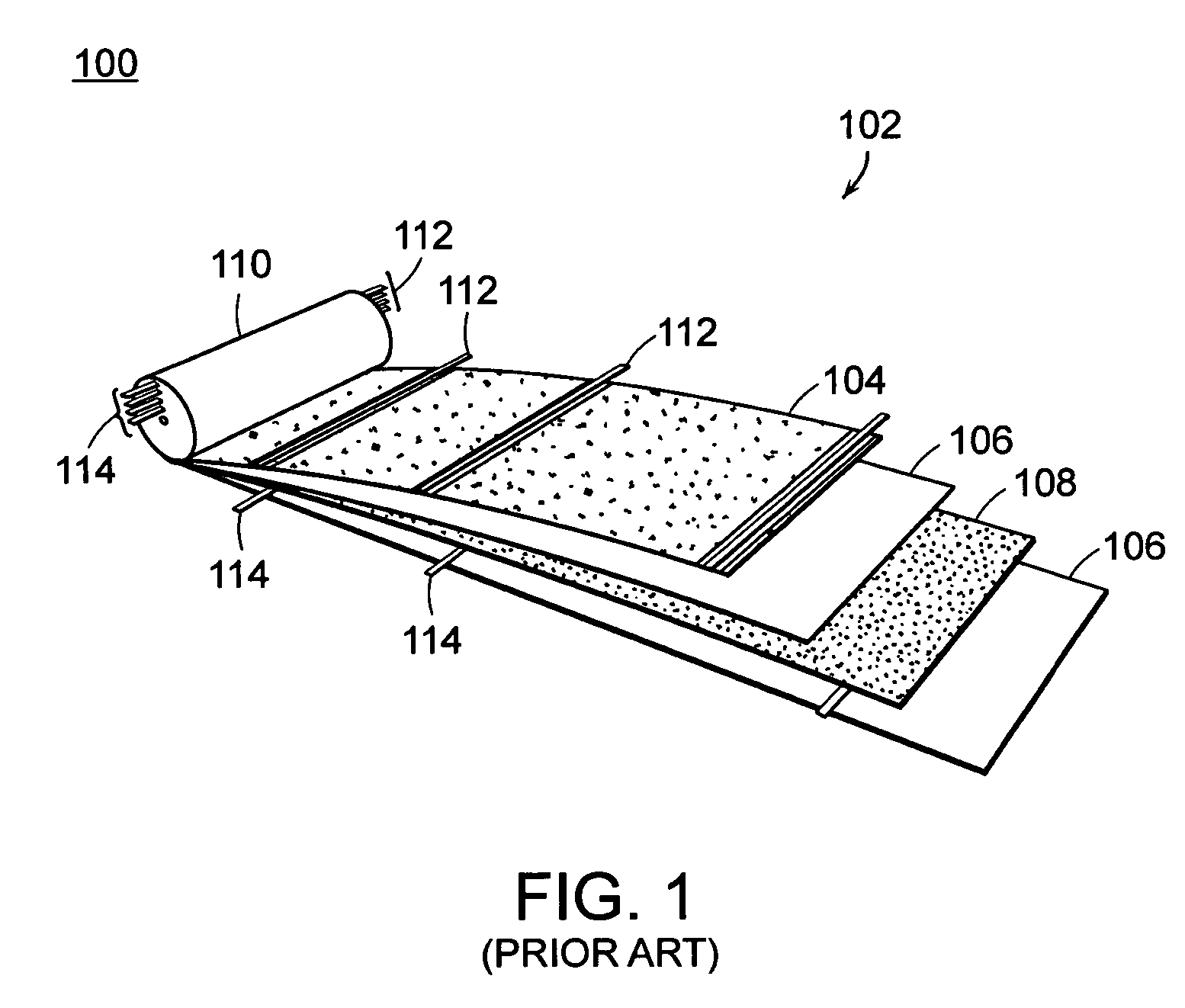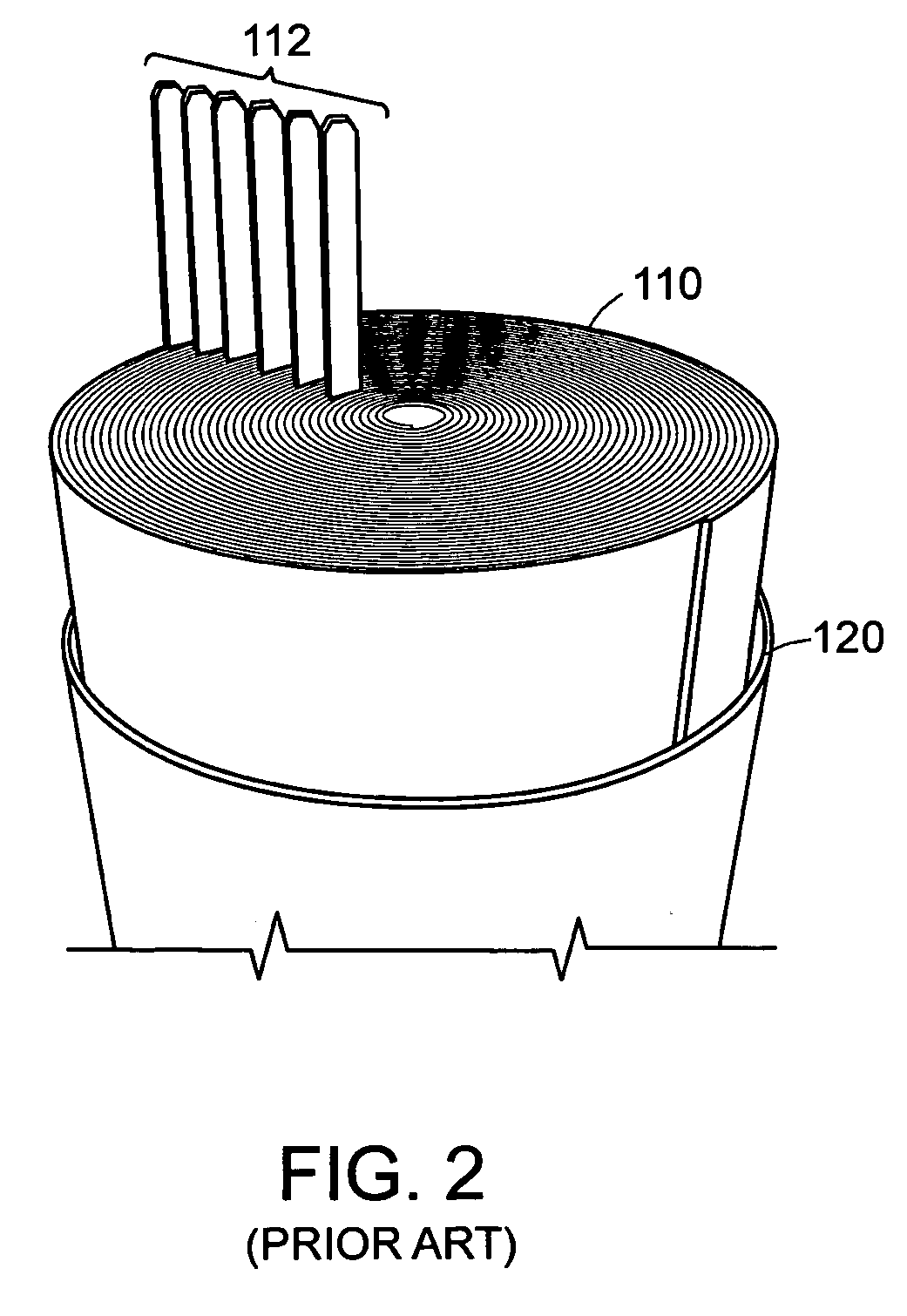Low impedance layered battery apparatus and method for making the same
a battery and low-impedance technology, applied in the direction of wound/folded electrode electrodes, cell components, sustainable manufacturing/processing, etc., can solve the problems of loss of electrical power, heat dissipation internally within the battery, and the end of the cell is not well integrated into the anod
- Summary
- Abstract
- Description
- Claims
- Application Information
AI Technical Summary
Problems solved by technology
Method used
Image
Examples
Embodiment Construction
[0024] The following describes in detail one or more embodiments suitable for arriving at the method and apparatus described herein, and should not be taken as exhaustive, inclusive, or limiting.
[0025] As mentioned previously, batteries have been formed by co-winding layers of active material (anode, cathode) and separating membrane layers in various geometries as called for by the application at hand. Some are rolled into cylindrical shapes, while others have rectangular or other shaped cross-sections, and are said to have “prismatic” configurations.
[0026]FIG. 1 shows part of a battery device 100 according to the prior art. Strips or sheets of anode 104 and cathode 108 are separated by separator membranes 106. The composition of anode 104 and cathode 108 depend on the specific type of battery, and include a layer of an electroactive material, e.g., graphite, metal, and other materials on an electrically conductive substrate. The substrate may serve as a current collector. In Li-i...
PUM
| Property | Measurement | Unit |
|---|---|---|
| thickness | aaaaa | aaaaa |
| thickness | aaaaa | aaaaa |
| thickness | aaaaa | aaaaa |
Abstract
Description
Claims
Application Information
 Login to View More
Login to View More - R&D
- Intellectual Property
- Life Sciences
- Materials
- Tech Scout
- Unparalleled Data Quality
- Higher Quality Content
- 60% Fewer Hallucinations
Browse by: Latest US Patents, China's latest patents, Technical Efficacy Thesaurus, Application Domain, Technology Topic, Popular Technical Reports.
© 2025 PatSnap. All rights reserved.Legal|Privacy policy|Modern Slavery Act Transparency Statement|Sitemap|About US| Contact US: help@patsnap.com



